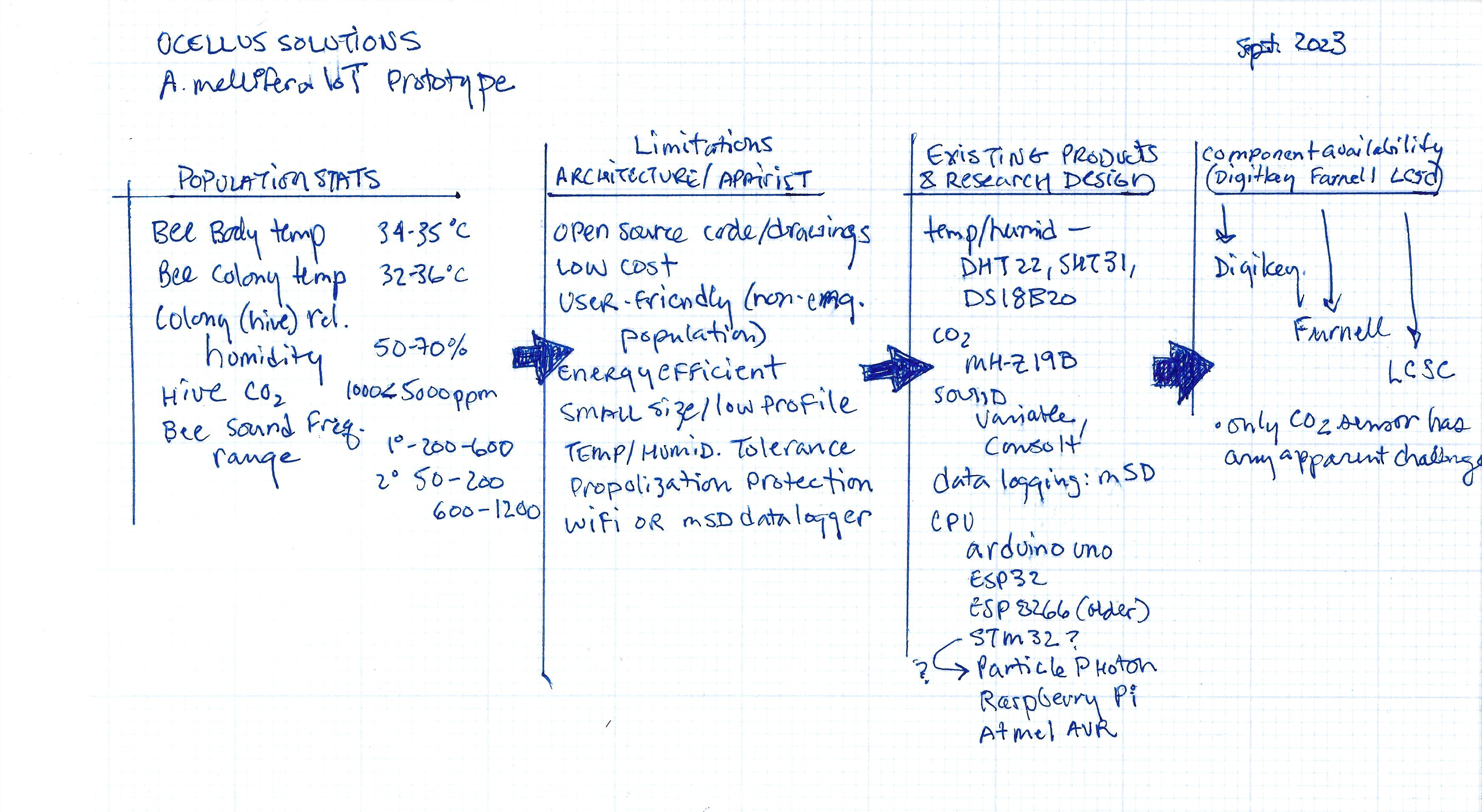Not knowing anything about IoT, I applied concepts from my public health background to organize the process.

Taking on the challenge of building my first IoT prototype for monitoring beehives was like someone afraid of bees encountering a large swarm – a bit frightening. Here’s how I went from zero to prototype, navigating the basics and creating my prototype.
In Public Health, we often say ‘start with the population of interest.” OK, honey bees (yes, it is two words). I read a few books, pulled some scholarly articles, and took online and community college classes. I sketched out honey bee ‘demographics’ and characteristics of the beehive.
The next step was to consider the physical limitations of a beehive, the typical beekeeper, and my values. There is something known as “bee space” – it’s basically a gap of roughly only 5-8mm. Anything smaller is subject to being sealed with propolis, bees’ go-to glue for sealing things up. More than 8mm, and the colony will likely build an additional comb in its place. The bottom line is that there isn't much space to work! Most beekeepers are not electronic nerds, so everything has to be as easy to understand and use as possible. And because beekeeping can be an expensive endeavor, the final product has to be affordable.
I’d be silly (and was) to start to work on my prototype without researching what, if any, existing products are out there on the market. While several commercial bee colony monitoring electronic gizmos are on the market, they are often extremely expensive, difficult to install, calibrate or interpret, or don’t provide a meaningful UX. They are, at this moment, rarely used. We’ll change all this.
I summarized the various existing products and those used in scientific research. That proved to be extraordinarily useful. With each step in this process, I could narrow down the components and design elements to a more manageable level. The final step in this process was to help ensure that since this is an open-source, not-for-profit endeavor, folks throughout the Americas, in Asia and Europe, could purchase the necessary components.
Developing my prototype was all about learning as I went, keeping things simple, and building on what others had done. Now that the first version is buzzzzzzzzing along, I’m excited to keep refining it. Now, who’s ready to build their own IoT beekeeping project?
If you have tips and tricks or want to share your prototype stories, connect with me on Hackaday.io
 Kevin Jablonski
Kevin Jablonski
Discussions
Become a Hackaday.io Member
Create an account to leave a comment. Already have an account? Log In.